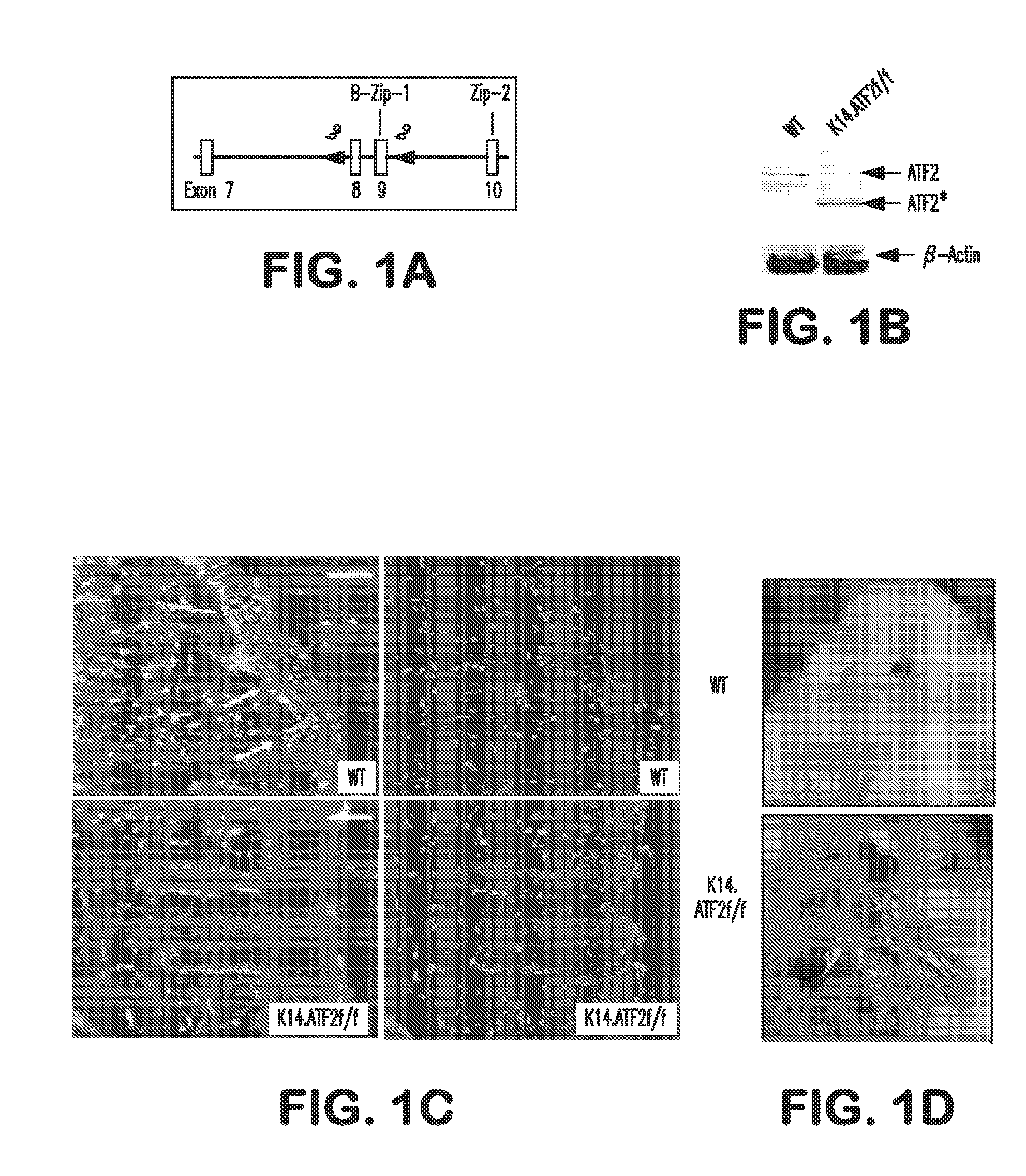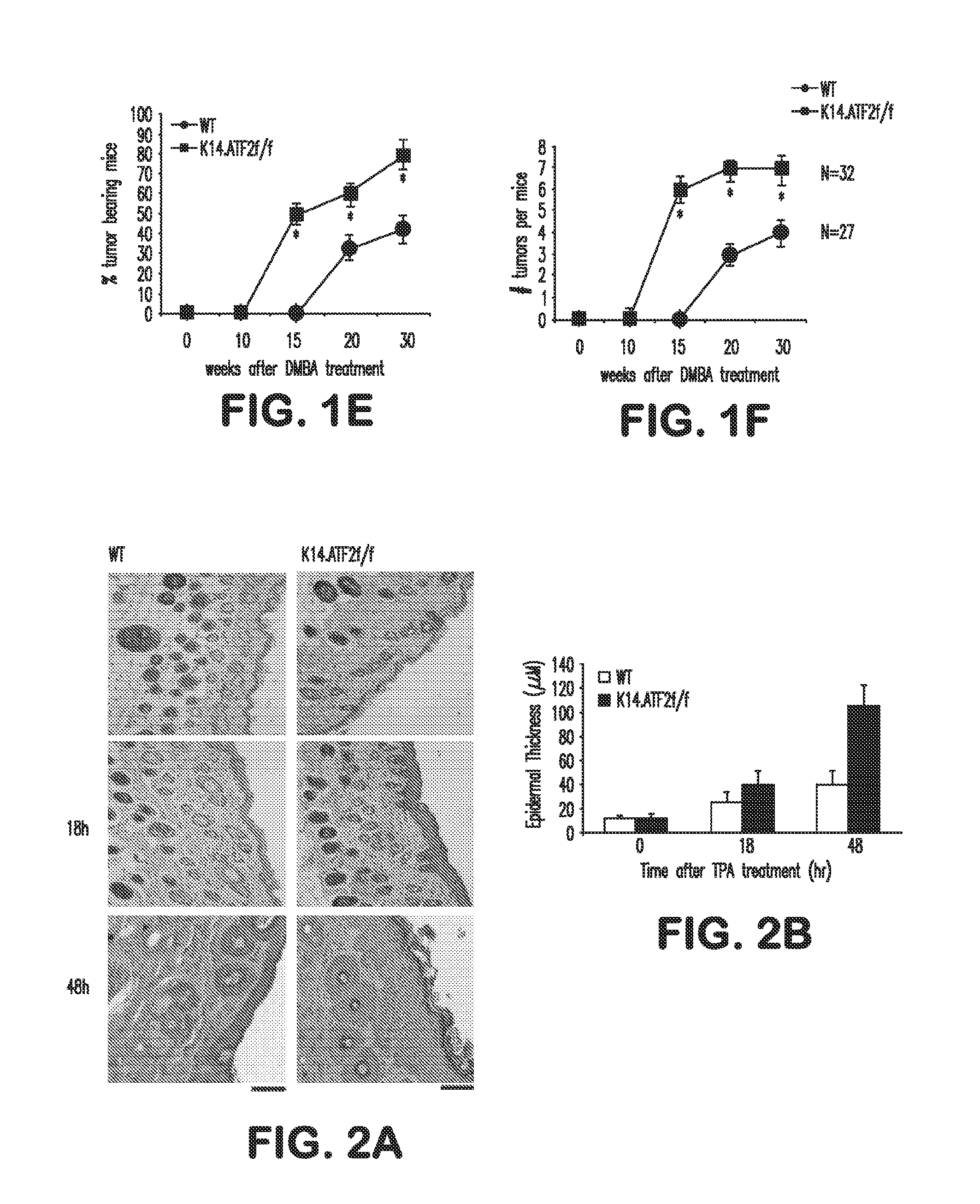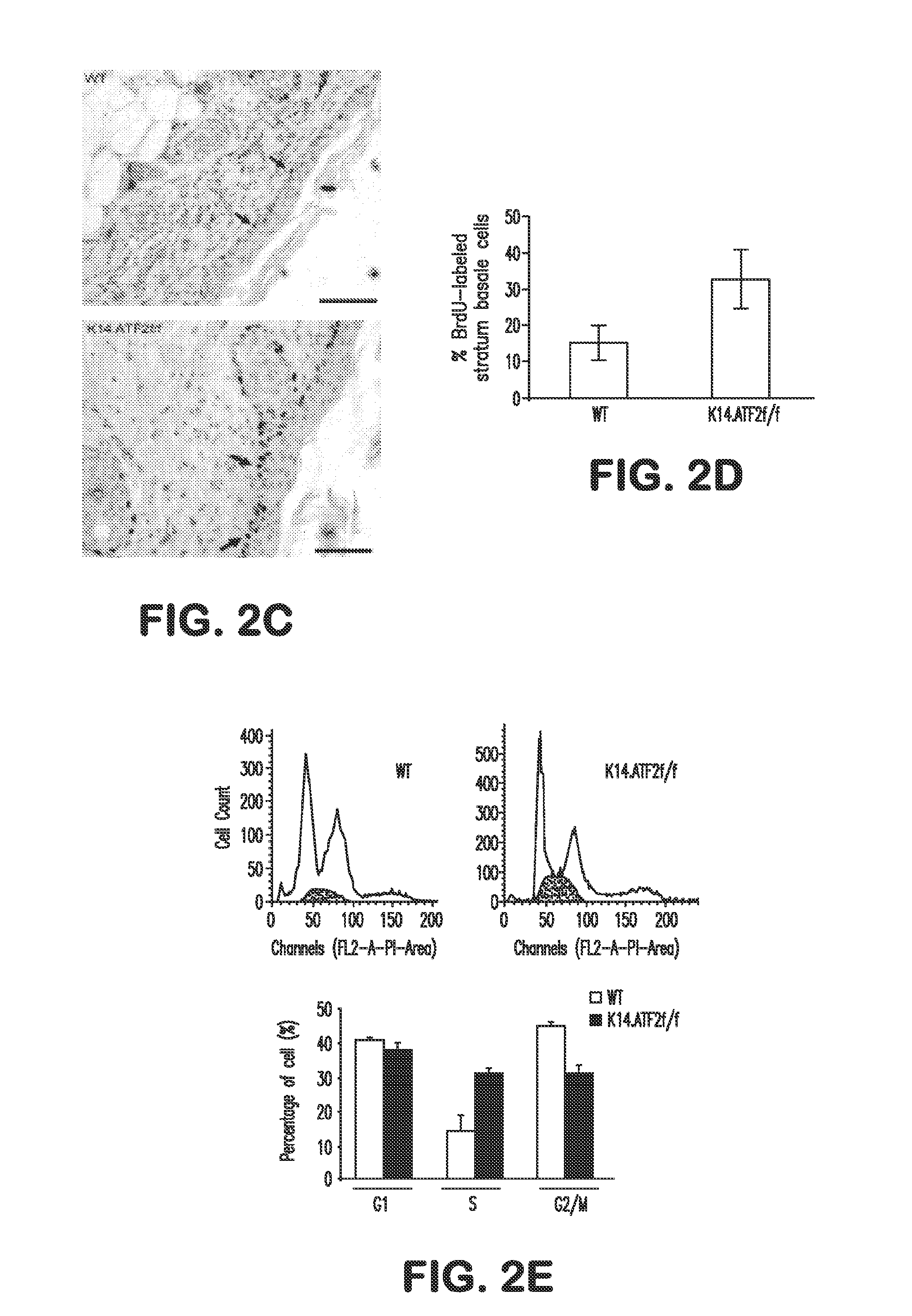Use of Activating Transcription Factor-2 (ATF2) for Detecting Skin Cancer
a transcription factor and skin cancer technology, applied in the field of skin cancer, can solve the problems of major obstacles to its treatment, incomplete lack of tumor suppressor protein expression, and failure to correctly regulate cellular proliferation, so as to reduce nuclear localization and increase atf2 activity or expression
- Summary
- Abstract
- Description
- Claims
- Application Information
AI Technical Summary
Benefits of technology
Problems solved by technology
Method used
Image
Examples
example 1
[0098]The mouse knockout of ATF2 leads to early post-natal lethality (24). Thus, to study the function of ATF2 in the skin, the Cre-loxP system was utilized for disruption of the ATF2 gene in keratinocytes. Cre-dependent deletion of the ATF2 DNA binding domain and a portion of its leucine zipper, results in a transcriptionally inactive form of ATF2 (Breitwieser et al. unpublished results). Mice homozygous for the loxP-flanked (floxed) ATF2 gene (ATF2f / f) were born at the expected Mendelian ratios and presented no obvious abnormalities. In addition, in a number of tissues that were analyzed, the levels of ATF2 expression were comparable between WT and ATF2f / f (Data not shown).
[0099]To elucidate the role of ATF2 in skin cancer, ATF2f / f mice were crossed with keratin14-cre transgenic mice (K14-cre). The resulting ATF2f / f / K14-cre (K14.ATF2f / f) mice expressed the transcriptional mutant ATF2 gene in keratinocytes. Immunoblot analysis confirmed that keratinocytes prepared from wild-type ex...
PUM
| Property | Measurement | Unit |
|---|---|---|
| thickness | aaaaa | aaaaa |
| thickness | aaaaa | aaaaa |
| thickness | aaaaa | aaaaa |
Abstract
Description
Claims
Application Information
 Login to View More
Login to View More - R&D
- Intellectual Property
- Life Sciences
- Materials
- Tech Scout
- Unparalleled Data Quality
- Higher Quality Content
- 60% Fewer Hallucinations
Browse by: Latest US Patents, China's latest patents, Technical Efficacy Thesaurus, Application Domain, Technology Topic, Popular Technical Reports.
© 2025 PatSnap. All rights reserved.Legal|Privacy policy|Modern Slavery Act Transparency Statement|Sitemap|About US| Contact US: help@patsnap.com



